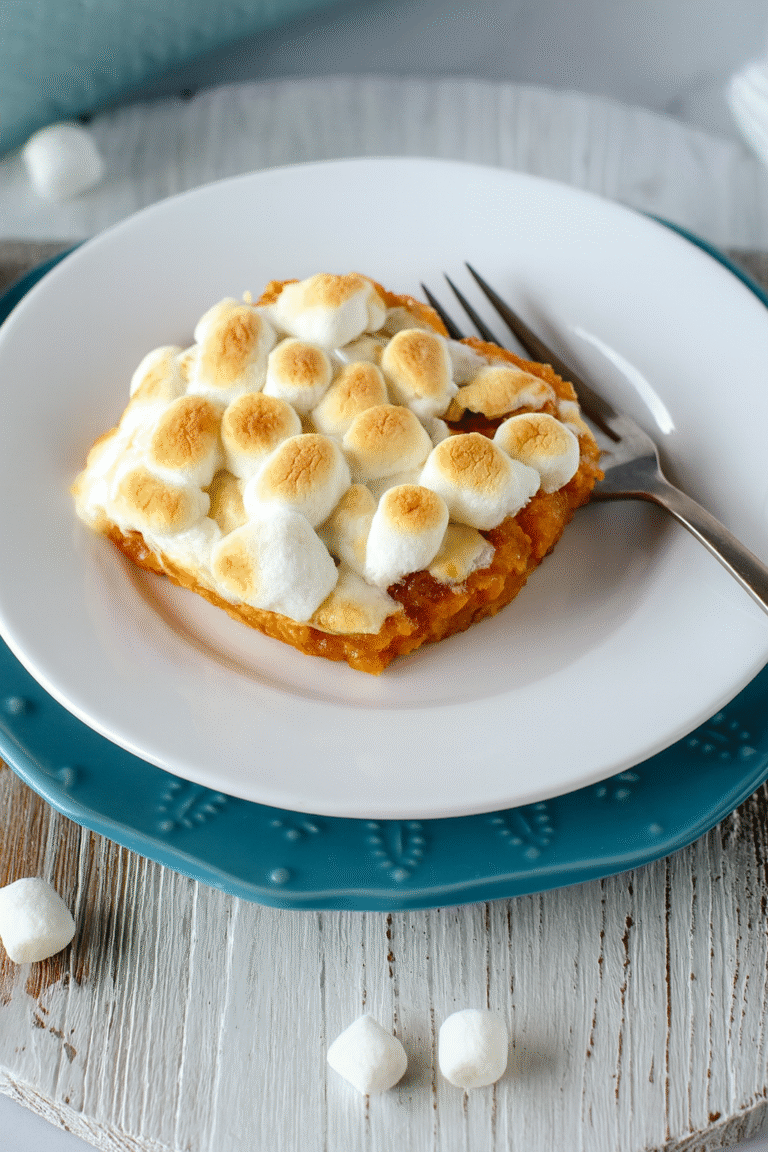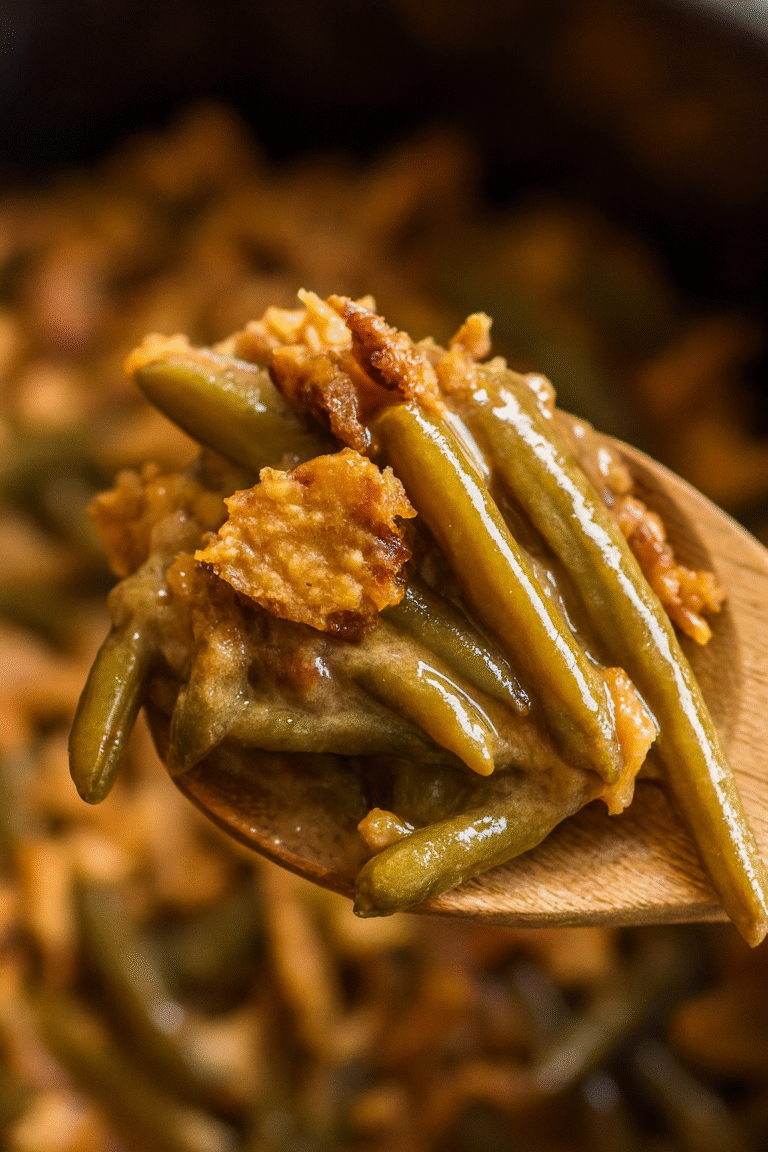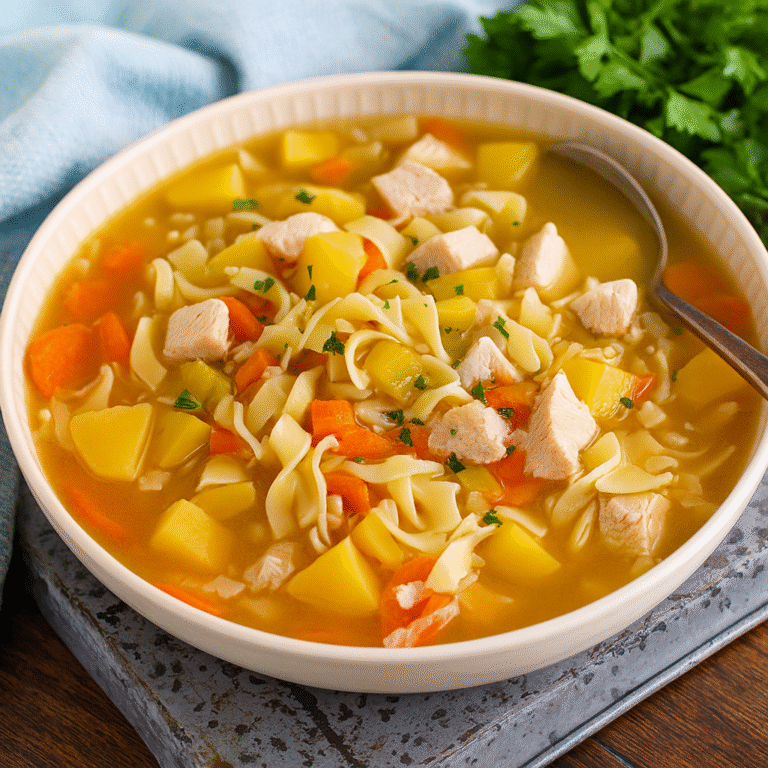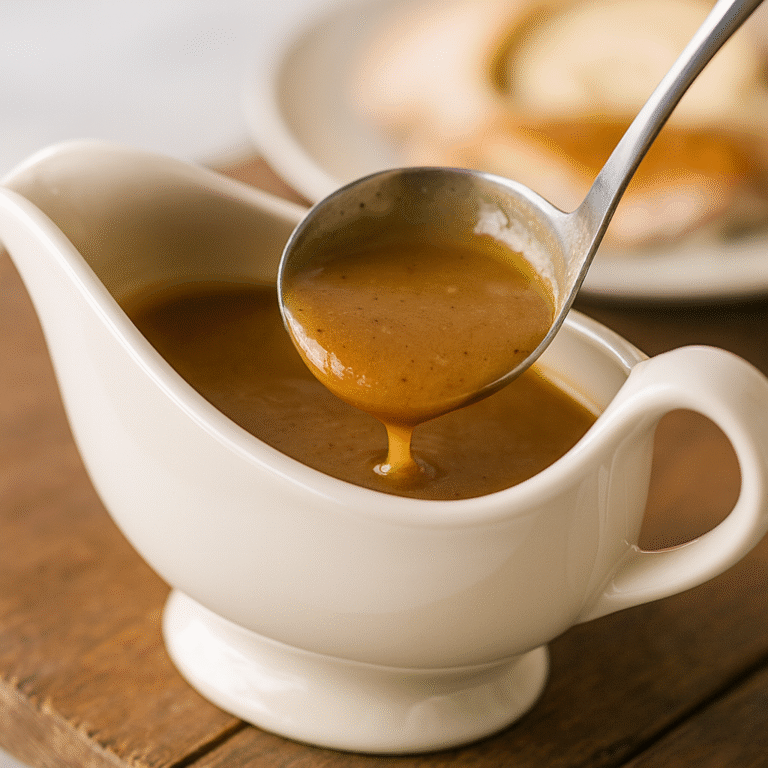Traditional Herb Stuffing Recipe (Make-Ahead)
The very first time I caught the warm, earthy fragrance of Traditional Herb Stuffing drifting from my grandmother’s oven, Thanksgiving instantly became my favorite holiday. That smell a mix of golden bread, sweet onions, fresh sage, and the tiniest hint of garlic was the scent of home. As a child, I would steal tiny cubes of bread before they went in the oven, tasting the subtle tang and imagining the finished dish. When the stuffing came out, bubbling and golden, the whole family gathered in the kitchen, drawn by that irresistible aroma and the promise of comfort in every spoonful.
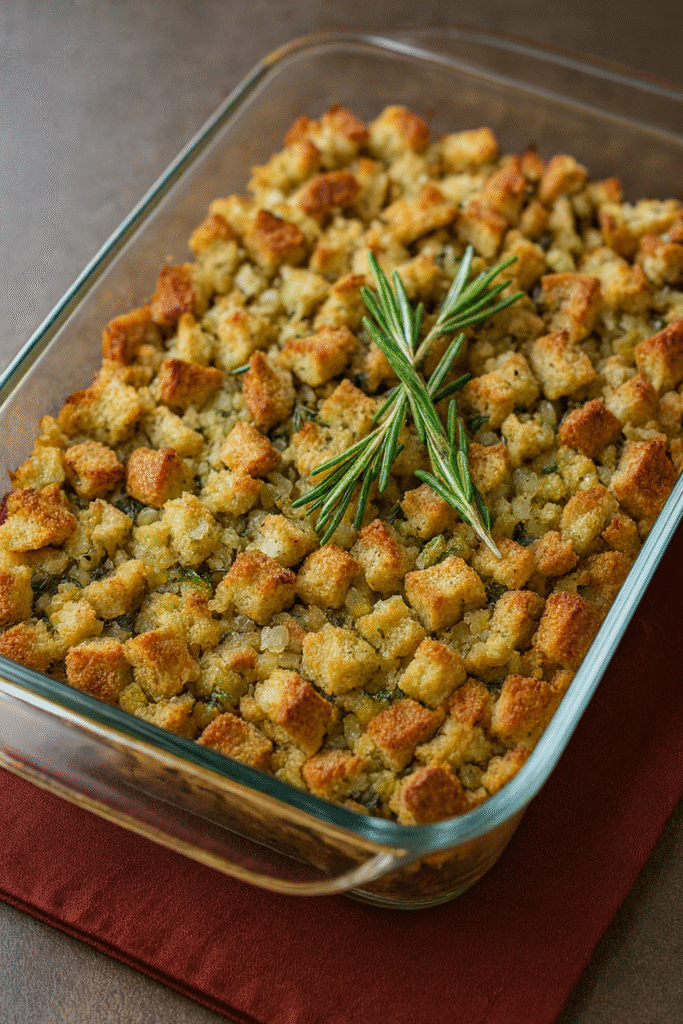
Even now, the memory of those first bites is as vivid as ever. Silky bits of celery, caramelized onions, still-steaming bread, and just the right amount of herb each forkful bringing the same cozy feeling I remember from childhood. Traditional Herb Stuffing isn’t just a side dish; it’s a celebration on a plate. If you’re looking to bring those heartwarming flavors to your own table, you’re about to uncover the secrets of a classic brought to life with the simplest of ingredients.
Why You’ll Love This Traditional Herb Stuffing
- Classic Comfort Everyone Loves
Traditional Herb Stuffing is the dish that disappears first at every holiday meal. There’s nothing like the blend of crisp-top and fluffy center that keeps people coming back for seconds. - Simple Ingredients, Big Flavor
Fresh herbs, onions, and good bread are all you need to build incredible layers of flavor in Traditional Herb Stuffing. You don’t need hard-to-find seasonings or fancy techniques just pantry basics and a bit of patience. - Customizable for Every Family
Every generation has its own twist. Toast more bread for extra crunch or swap in vegetable broth for a vegetarian version. With Traditional Herb Stuffing, you’re always free to riff off the base while keeping the soul of the recipe alive. - Make-Ahead Friendly
This dish makes planning easy. Prep the bread cubes the night before, assemble the stuffing in advance, or cool leftovers for next-day sandwiches. Traditional Herb Stuffing gets even more flavorful as it rests. - Perfect for Any Season or Occasion
While famous at Thanksgiving, Traditional Herb Stuffing fits right in at any dinner Easter, Sunday roast, or even a cozy winter lunch. The comforting herby aroma is always welcome. - Crowd-Pleaser with Universal Appeal
From picky kids to discerning grandparents, everyone finds something to love in this dish. Bring Traditional Herb Stuffing to any potluck and soak up the rave reviews. - Healthy Swaps Welcome
For those watching their diet, sub in whole wheat bread or use olive oil instead of butter. The vibrant herbs in Traditional Herb Stuffing keep things fresh and light.
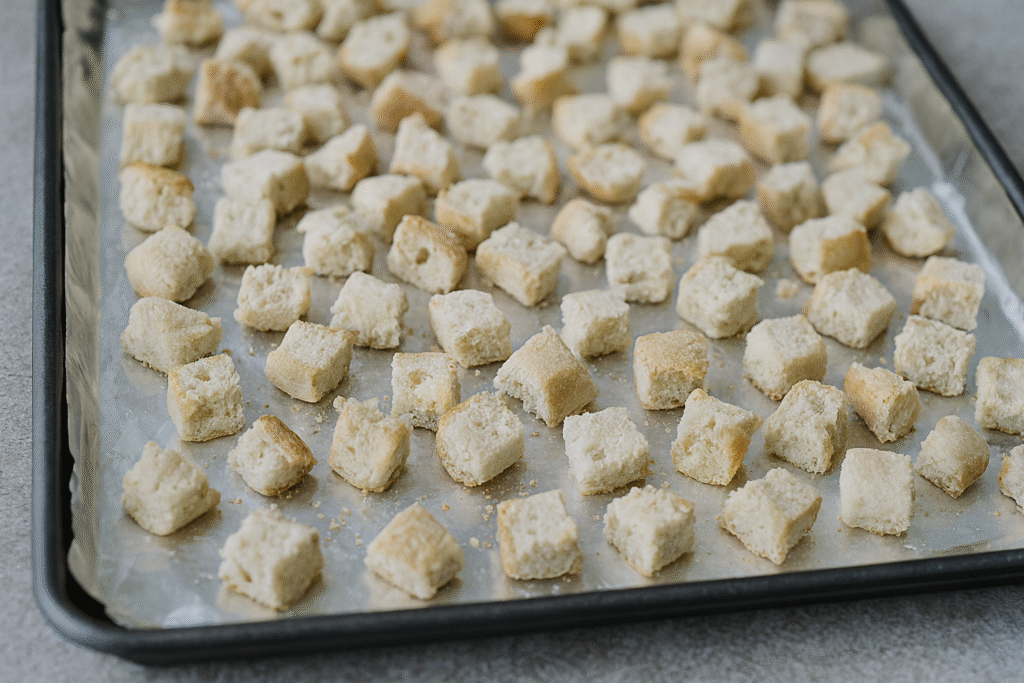
Ingredient Notes for Traditional Herb Stuffing
Foundation: Bread Cubes
Bread is truly the backbone of Traditional Herb Stuffing. Choose a good-quality loaf: Italian, sourdough, French, or even a mix for depth. Slightly stale bread (one to two days old) absorbs broth best. If you’re using fresh bread, cube and toast it in the oven until golden and dry. Opt for budget-friendly bakery loaves or use up end pieces from your freezer for an eco-friendly option.
Pro tip: Avoid pre-packed soft white bread, which can turn mushy. Go for rustic styles with a sturdy crumb. Gluten-free? Swap in your favorite GF bread just dry it the same way.
Aromatics: Onion, Celery, Garlic
These three work together, layering sweet and earthy with every bite. Dice everything evenly so they melt into the stuffing as it bakes, ensuring no harsh bites.
Tip: Yellow or sweet onions add warmth, while celery gives a fresh, almost grassy crunch. For extra punch, try shallots or leeks in place of onions.
The Creamy Part: Butter and Broth
Butter brings richness. Use real butter for tradition, or olive oil for a dairy-free twist. Broth (chicken or vegetable) supplies moisture and herby background notes. Homemade stock is the ultimate, but store-bought works just pick low-sodium for better control.
Tip: Warm the broth before adding so it soaks in evenly, and don’t flood the mixture—aim for bread that’s damp but not soggy.
Herbs: Sage, Parsley, Rosemary, Thyme
Fresh herbs make Traditional Herb Stuffing shine. Sage is iconic, parsley brightens, and a little rosemary or thyme adds woodsy notes. If using dried herbs, reduce the amount (about one-third) since they’re more potent.
Twists: Add a sprinkle of chives for color or swap in tarragon for a unique flair.
Optional Add-ins and Toppings
Add toasted nuts, dried cranberries, or diced apples for sweetness and crunch. A scattering of browned sausage crumbles turns this side into a main event.
Secret chef move: Drizzle melted butter over the top before baking for the crispiest crust.
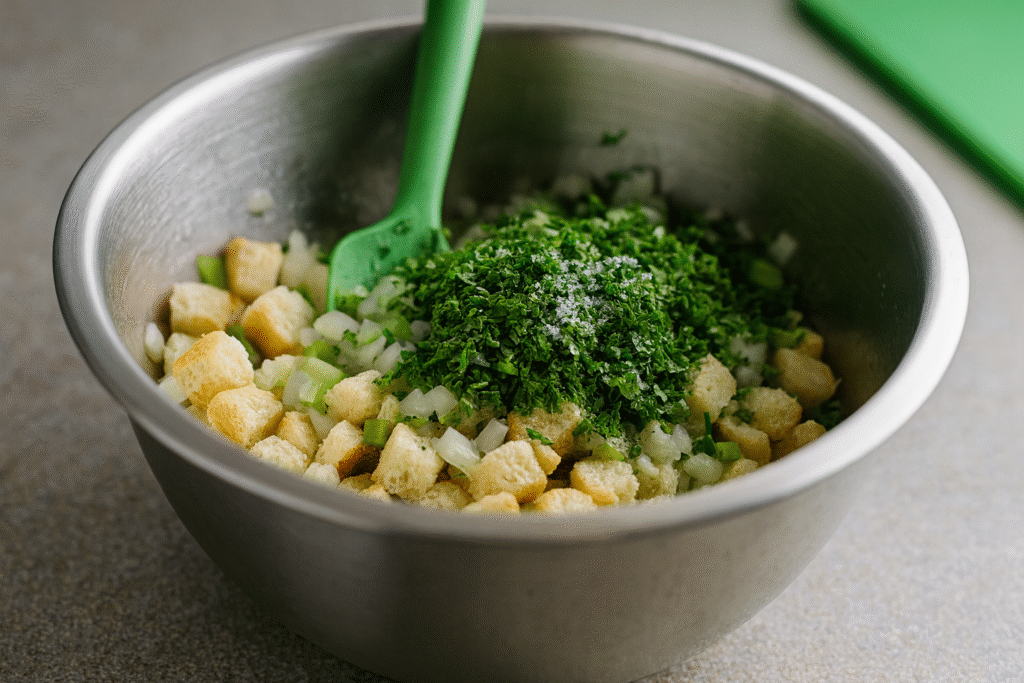
How to Make Traditional Herb Stuffing
Preparation
Start by cubing your bread into bite-sized pieces. Spread cubes out on baking trays and let them dry overnight, or toast them at 275°F until crisp and golden texture is key for soaking up all those herby flavors without turning gummy. Dice onions and celery finely, chop herbs, and set out your broth, melted butter, and eggs if using.
Pro tip: Prep a large mixing bowl and a sturdy spoon. Stuffing mixes are thick and sometimes hard to stir. Lining your baking dish with a bit of butter ensures nothing sticks.
Cooking Process
- Preheat your oven to 350°F. Grease a large casserole or baking dish.
- In a skillet, melt butter over medium heat. Add onions and celery, with a generous pinch of salt. Sauté until translucent and just beginning to caramelize, about 10 minutes. Stir in garlic and fresh chopped herbs, cooking until fragrant (1-2 minutes).
- Tip toasted bread cubes into your mixing bowl. Pour the buttery vegetable and herb mixture over the bread.
- Drizzle with half of the warm broth, tossing gently. If using, beat eggs and add to the mix for extra richness.
- Slowly add more broth until the bread is damp but not soggy. The perfect Traditional Herb Stuffing texture looks moist and clumpy, not wet. Taste and adjust salt and pepper.
- Scrape into your prepared baking dish. Dot with more butter if you want an extra golden crust.
- Cover with foil and bake for 25 minutes, then uncover and bake 15-20 minutes more until the top is crispy and beautifully browned.
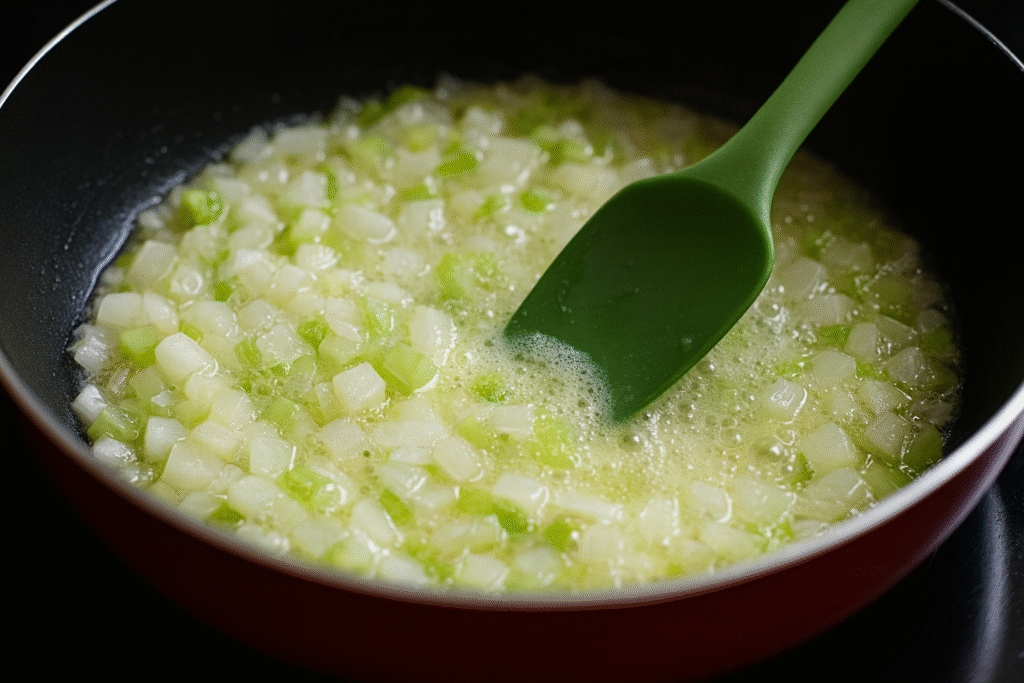
Pro tip: Rotate the pan halfway through baking for even crispness and color.
Finishing Touches and Serving Suggestions
Let your Traditional Herb Stuffing rest for at least 10 minutes after baking to set the structure and keep every bite moist. Fluff gently with a fork before serving. Garnish with extra chopped herbs or a few cracks of black pepper for a polished look.
Serve warm for peak comfort. For special presentation, spoon stuffing onto a serving platter or bake in pretty ramekins for individual portions.
Pro tip: Leftover stuffing makes a perfect base for next-day breakfast with a poached egg on top.
Expert Cooking Tips for Traditional Herb Stuffing
- Toast bread for Traditional Herb Stuffing until it’s dry but still golden for best texture.
- Always add broth gradually you can add more, but you can’t take it out.
- Sauté aromatics on low to avoid burning and keep their flavor sweet, not bitter.
- For crispier Traditional Herb Stuffing, bake uncovered during the last 15-20 minutes.
- Don’t pack the stuffing tightly in the baking dish; let it breathe for soft and crusty bits.
- If your oven runs hot, check early to avoid over-browning the top.
- Use a mix of fresh and dried herbs for dimension in Traditional Herb Stuffing.
- Experiment with a “taste test” by baking a mini sample cup to tweak seasoning before doing the full batch.
Storage and Freezing Tips for Traditional Herb Stuffing
- Store Traditional Herb Stuffing in an airtight container in the fridge for up to 4 days. Let it cool before covering to avoid sogginess.
- To freeze, scoop Traditional Herb Stuffing into freezer-safe bags or containers. Press out air and store flat for up to 1 month.
- Thaw frozen portions overnight in the refrigerator. Heat covered in a 350°F oven for best texture—uncover for the last few minutes for a crispy top.
- When reheating Traditional Herb Stuffing, sprinkle a bit of broth over the top to bring back moisture before baking.
- Prepare Traditional Herb Stuffing a day in advance and reheat it just before serving. It actually tastes even better after the flavors meld overnight.
Variations and Substitutions for Traditional Herb Stuffing
- Sausage and Apple Traditional Herb Stuffing: Brown 1/2 pound of sausage and mix in diced apples for a sweet-savory twist that works for both Thanksgiving and brunch.
- Gluten-Free Traditional Herb Stuffing: Use gluten-free bread cubes and double-check your broth for hidden gluten a great swap with no sacrifice in flavor.
- Vegan Version: Swap butter for olive oil and use vegetable broth. Skip the eggs or use a flaxseed “egg” mix for binding.
- Spicy Jalapeño Traditional Herb Stuffing: Fold in finely chopped jalapeños and pepper jack cheese for a bold, Southwest-inspired side.
- Cornbread Blend: Replace half the bread with day-old cornbread for a sweet and crumbly Southern twist. This adds a nutty, buttery note.
- Nut and Fruit Add-ins: Toasted pecans, walnuts, or dried cranberries give a festive touch and crunch to any batch of Traditional Herb Stuffing.
- Wild Mushroom Mix-In: Sauté wild mushrooms with the aromatics for an earthy, umami-rich flavor boost that pairs well with beef or vegetarian mains.
- Low-Carb Option: For a lighter spin, swap half the bread for roasted cauliflower florets—unexpected and delicious!
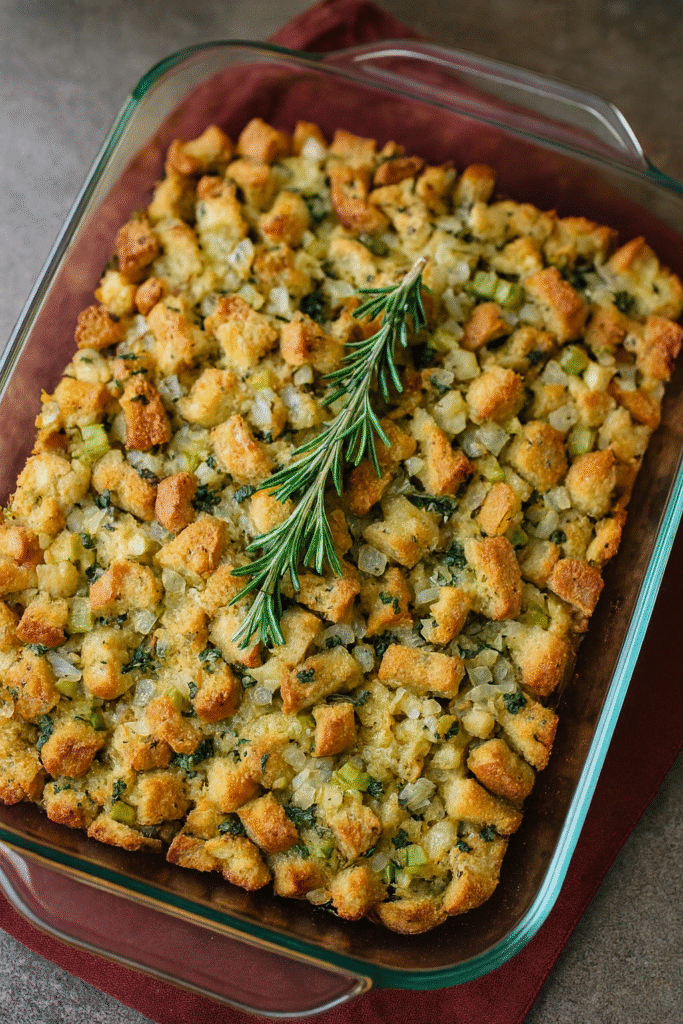
What to Serve With Traditional Herb Stuffing
Traditional Herb Stuffing pairs with almost anything, but stars alongside classic comfort food favorites.
- Roast Turkey or Chicken: The savory herb notes of Traditional Herb Stuffing crave the richness of roast poultry.
- Creamy Mashed Potatoes: Soft potatoes and slightly crispy stuffing meet in perfect harmony on your fork.
- Green Bean Almondine: The fresh, bright beans cut through the richness of the stuffing and round out the plate.
- Buttery Dinner Rolls: Mop up any extra juices with soft, warm rolls—a must for holiday spreads.
- Autumn Pear Salad: Crisp pears and tangy vinaigrette brighten up hearty Traditional Herb Stuffing.
- Warm Spiced Cider: The herby flavors of stuffing are beautifully balanced by the sweet spice of apple cider.
FAQs about Traditional Herb Stuffing
Can I make Traditional Herb Stuffing ahead of time?
Yes, Traditional Herb Stuffing can be assembled a day in advance. Cover and refrigerate, then bake just before serving.
Is it safe to bake Traditional Herb Stuffing inside the turkey?
For food safety, it’s best to bake Traditional Herb Stuffing separately. If you do stuff poultry, check that the center of the stuffing hits 165°F.
What bread works best for Traditional Herb Stuffing?
Day-old rustic or hearty bread gives the best texture for Traditional Herb Stuffing. Soft sandwich bread tends to get mushy.
How do I fix soggy or dry Traditional Herb Stuffing?
If it’s too wet, bake uncovered longer. If dry, add a splash of broth and reheat, covered.
Can I freeze Traditional Herb Stuffing?
Absolutely. Cool fully, portion, and freeze in airtight containers. Thaw overnight before reheating in the oven for best flavor.
How can I make Traditional Herb Stuffing healthy?
For a lighter Traditional Herb Stuffing, use whole grain or sprouted bread, olive oil instead of butter, and plenty of fresh herbs for bold flavor.
Conclusion
Traditional Herb Stuffing is more than a holiday dish it’s an invitation to savor those moments that make gatherings special. The scent, the crunch, and the warm flavors bring family and friends together every single time. Try this recipe, tweak it to your liking, and watch it become a tradition at your table, too. If you make your own Traditional Herb Stuffing, I’d love to see your photos or hear your stories in the comments below. Happy cooking and here’s to new memories and full plates! 😊


